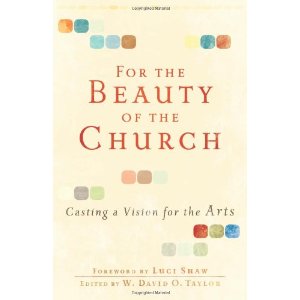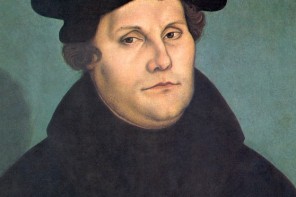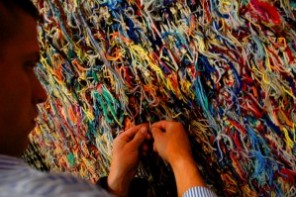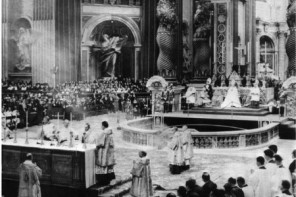 Review of Chapter 1 in For the Beauty of the Church. Transpositions is hosting reviews of each chapter of this book between Aug 2 and Aug 9, 2010.
Review of Chapter 1 in For the Beauty of the Church. Transpositions is hosting reviews of each chapter of this book between Aug 2 and Aug 9, 2010.
It is fitting that the first essay of this collection should offer a theological framework for art. Discussing Genesis 2:4-15, Andy Crouch points out that God is not alien to His creature’s cultural practices as He too makes something of the world: He plants a garden. This garden, Crouch observes, is both useful (good for eating) and useless (beautiful). Instead of accepting God’s good gift to humanity, Crouch argues, the first humans reject their dependence upon the Creator by exploiting the world and trying “to make something of the world that the world simply cannot yield.” Thankfully the story does not end there: “the Creator continues to create ex creatis. He stays in the story. Indeed, he ultimately enters the story at the point of greatest pressure and pain.”(35)
So, where does art come in? Crouch says, “art can be provisionally defined as those aspects of culture that cannot be reduced to utility.”(36) Connecting this statement to Crouch’s development of Genesis, he is suggesting that art is dependent (for its existence and positive value) upon God’s choice to make something of the world that is both useful and useless.
On David O. Taylor’s blog, a very interesting conversation has taken place in response to Crouch’s essay and to Steven Guthrie’s review of the book. In response to Guthrie, and perhaps others, Crouch commented: “Personally I would appreciate seeing more serious engagement with my essay (and Barbara’s) than simply quoting the word ‘useless.’” My post is an attempt at a more serious engagement.
Whatever misunderstandings may have arisen in regards to Crouch’s essay probably stem from his “provisional definition” (above) of art. Definitions of art find critics easily. But Crouch should not have defined art “as those aspects of culture that cannot be reduced to utility” because there are aspects of culture (e.g. love, friendship, learning, etc.) that cannot be reduced to utility and that would not normally be called ‘art’. This definition only obscures Crouch’s main point, which might be better summarised as follows: art is an important set of cultural practices and artefacts that draws our attention to those aspects of human existence that cannot be reduced to utilitarian purpose.
A more constructive critique might begin by asking: “What is at stake in Crouch’s claim that ‘art cannot be explained in terms of its usefulness?’” At one point, Crouch seems to provide an answer. He writes: “We stake our worship every Sunday on the belief that we do not need to convince God to be useful to us, and he does not require us to be useful to Him.”(39) Art, then, is suggestive of an economy of grace that defines the Creator’s relationship with his creatures.
What about art, precisely, is useless? James K. A. Smith’s article at Cardus is interesting in relation to this issue, so I won’t belabour the point. Briefly, I think that works of art have an ‘extra’ or ‘gratuitous’ dimension that always eludes and exists beyond the particular ways that we use them. Perhaps this is seen most clearly in the making of art. Although artists use their materials, they often have a respect for the ‘otherness’ of their materials, and find value in the way the materials resist the artist’s use of them. Artistic creativity is an encounter with excess beyond utility: a reminder that this object does not exist solely for my use, and that it has, in some sense, a life of its own.
Instead of, or in addition to, Crouch’s development of the Genesis narrative, it may be helpful to provide a Christological foundation for culture and the “uselessness” of art. In the person of the redeemer we have an example of what it means to be human, and, therefore, what it means to be “culture makers.” In the incarnation, the Creator humbles himself and does not consider His creation to be a means to achieve His end, but as a place for the Son to live and redeem. Christ’s self-emptying love, and not logical necessity, is the “reason” for the incarnation. To be Christ-like in our artistic endeavours may mean, then, that we are servants to works that are “other” than us, and for others beside us. Like love, human artistry should not be reduced to utility. The reason for this is not only that we would become poorer artists or art patrons, but also that we would lose an opportunity to become more like Christ.






Jim –
Thanks for this. I think Andy’s definition has the weight of almost two centuries of tradition behind it and derives from an era following Kant’s philosophical exploration of the aesthetic. The problem not only with this definition, but also with modernity in general, has been the absence of normative criteria for what makes for meaningful art. Meaning and “use” are related at least at a base level, and arguments for and against the utility of art are dependent upon greater clarity of the purposes of art. No one would want to argue for the purposelessness of art — so art’s purpose, its telos must be related to its role in a given community. Nick Wolterstorff has written extensively about the reality of “worlds” of art — that is, communities of interpretation. The New York avant guard places art at its cultic center of meaning-making whilst celebrating irony, double-entendres, and a refined practice of aesthetic contemplation. Art history is replete with alternatives to this practice — and among the other possibilities is the “use” of art for enhancing worship of God. Religious art has fallen on hard times because the secular art world(s) have no use for it and the church has largely ignored it or employed a kitsch version of it. So it seems to me that the issue in front of us is not so much defining art as it is deciding what sort of art the church is willing to underwrite. Of course putting our wallet where our mouth is not nearly as attractive as a discussion of definitions!
Thank you for this insightful comment. I especially like your point that “the issue in front of us is not so much defining art as it is deciding what sort of art the church is willing to underwrite.” I think that this perspective really shifts the question away from a question that may be unanswerable to a set of very practical (and important concerns). It seems to me that the church ought to embrace the question “how do we, the church, use the arts?” I think that ‘For the Beauty of the Church’ is a great attempt at answering this question, and I think that many more attempts need to be made.
Thanks for your post, Jim. When I read through this essay, I too was thinking that a different provisional definition would be helpful. I had sketched in the margin that the issue seemed to be not the uselessness vs. usefulness of art, but the end to which art is oriented, as Bruce mentioned above.
When Andy used the example of prayer, he said that prayer is unuseful because prayer does not ‘work,’ and by work I think he meant we get whatever we ask for. Rather, prayer “brings us into the life of the one by whom all things were made and are being remade.” So, it’s not that prayer does not have a use or purpose, but that we often misunderstand and even trivialize its use or purpose.
I love Andy’s explanation of how art helps us play and enter into pain, and I think this demonstrates perfectly the purpose for art that goes beyond mere utilitarianism. Art works, but just like prayer, it does something more than work.
Thanks for mentioning Crouch’s comments on prayer. I think that is another good illustration of what I think his ‘main point’ actually is (even though his provisional definition and discussion of Genesis obscure this a little bit). Prayer is also a good example of what I mean by an encounter with excess: when we pray we often have something that we want, something we are using it for, but prayer can bring us into a reality and a relationship that is about so much more than what we want.
I wonder what it means for the church to engage with art outside of a sunday morning worship serveice in the manner we have been talking about. I imagine that it means letting go of an agenda (as James Smith talks about not always trying to ‘find God’ in contemporary art). But it also seems to require a very generous spirit, and to be open to the possibility that (to use Bruce’s language) the church is open to the possibility that value may be found in other communities of interpretation. What do you think?
Good friends, short of sharing an adult beverage in the same room, while we exchanged ideas in a spirited manner, is a good blog discussion. Many thanks for taking up the contents of the book. This is certainly an author’s dream: that readers would take a book seriously enough to want to talk about it at length, even if, and especially if, it meant finding points of disagreement or weakness.
I’m encouraged to see the entry and the comments thus far. I’m sorry I don’t live in Scotland to make this a more personal experience. Jeremy Begbie moved across the pond and my wife never forgave him. Well, she did; and she likes him aplenty. We both do. But since she grew up in Scotland, I think she found herself rueing the day she heard the news that Duke University might become our new home, instead of–hello golf–St. Andrews. The golf part would be me. The hill walking, grey skies, fish n chips and cold ocean waters would be her.
Either way, I was happy to discover y’alls blog a few weeks ago and am always encouraged to find “cousins” in the field.
Blessings,
David
Jim, I find great value (and dare I say, solace) in a christological foundation of art which also takes in creation (as expressed in Genesis). I’ve often marveled at C.S Lewis’s image of Aslan singing Narnia into existence – i think the power of the story and the spoken word is fundamental to Genesis also. I guess for my own artistic inclinations the beauty and power of speech and story is inspiring. Thanks for a thoughtful critique of the chapter. I look forward to Andy Crouch’s response and a continued dialogue on the topic!